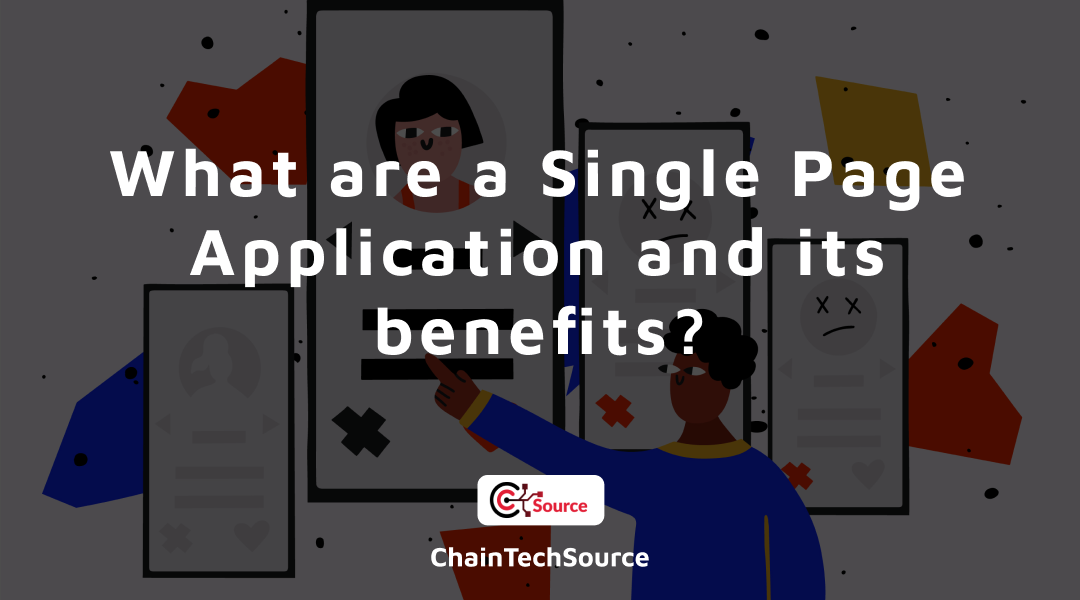Introduction
Single Page Applications are the finest solution to your business if you plan to engage an audience, with unique content, and smooth experiences for your users.
Single-page applications deliver the best user experience, meanwhile, users can navigate easily between the different pages of an app without waiting for the pages to load.
Though, earlier SPAs have left consumers out in the dark when it comes to managing content. It’s now possible to pair your SPA with the right CMS to give both developers and consumers the level of control they need.
What is a Single Page Application?
This is an application where a lot of information breaks down and only a few portions need to be updated at a time.
For example, when you browse through your email you will notice that not many changes occur during navigation, and the sidebar and header remain the same as you go through your inbox.
The SPA simply drives what you require with each click, and your portal will provide that information. This is dissimilar to a standard page load where the server renders a full page with every click you make and drives it to your browser.
Thus client structure makes load time much faster for users and makes the amount of information a server has to spend much less and more cost-efficient.
How Does Single Phase Application Work?
The SPA is an application that connects with the user by actively reviewing the current page, rather than loading entire new pages from the server.
This method stops interruption of the user experience between successive pages, making the application behave more like a desktop application. Most of the websites have a lot of duplicate content.
Benefits of Single-page Apps
A significant feature of single-page applications is performance. They increase performance by loading HTML, CSS, and JavaScript assets as soon as the website is loaded.
The purpose is that when users open an application, they need the shortest wait time so that they can do their work and leave. The performance imitates the demand for the application.
If the application does not get the required performance, users may leave that app and select another platform. That’s one of the main reasons developers choose single-page apps currently.
There are other benefits as well such as;
* Battery reusability
* Optimization
* Client-side rendering
* User experience
* Easy debugging
* Performance
* Less complex implementation
* Better caching
* Better SEO optimization
Frameworks to build a powerful Single Phase Application (SPA)
If you are determined to create a SPA that best outfits as per your business requirements, then establishing it on a robust SPA framework is mandatory.
All the frameworks have their functions. But, the aspect of which SPA framework is best depends completely on your business requirement
Meteor
This modifies technology platforms and will let you work effortlessly among servers and clients to create high-performing single-page applications.
Meteor only needs fewer code lines, which means lower bugs, fast development, and provides high-quality single-page apps.
If you want to improve your app quickly, Meteor is the greatest SPA framework for you.
React.JS
React JS is more compliant than other frameworks because of its standalone information, which assists a good response time and makes it the best framework for SPA development.
If connectivity and flexibility are the highest priority for your business, React JS is a good choice of framework.
A page based on React JS includes a Virtual DOM and it enables the development team to track and update the changes without affecting the other apps, thus enhancing the application’s flexibility.
Angular.JS
AngularJS data binding feature eliminates much of the code a developer would otherwise have to write. Therefore, creating a single-page app by Angular requires a few lines of code to deliver impressive performance.
Applications built with Angular JS tend to load quickly. The constituent router feature of AngularJS makes it extremely potential by delivering automatic piercing of codes. It allows the users to simply load the request code for the site. An Angular JS framework allows a SPA to work on every platform
VUE.JS
One of the most significant advantages of Vue.js is it is small (18-21kb) Because of its MVVM architecture, Vue.js allows two-way communication by making it very easy to handle HTML blocks. Vue.JS is also called reactive as it reacts whenever the data is transformed.
Backbone.JS
It is a vigorous framework for creating single-page apps. For developing single-page apps, Backbone.JS is a much-preferred framework because Its model view framework helps developers more than just configuring the JS architecture.
Ember.JS
If the user interface is in one of your app data, you should plan to choose Ember JS as a framework for your application.
Just like AngularJS, Ember JS also features two-way data binding, keeping both view and model in sync.
Ember JS is a highly biased, open-source framework that promotes more flexibility. The big platforms that include this framework are Nordstrom, Kick starter, LinkedIn, Netflix etc.
Single-phase application Examples
You need to be aware of all the basics of SPA, How SPA works, SPA advantages, and SPA frameworks.
The following are examples of single page application,
* E-mail: You can open an unread email, delete, compose, and even send emails.
* Grammar: You can get a good understanding of a write-up, get grammatical corrections, and perform SEO checks.
* Google Maps: You can search for new locations on the map, and change places.
You can perform all these operations without reloading the page.
Conclusion
The benefits of using SPAs are determinate. However, there are latest trends in the web applications field with improvements in SPAs such as Advanced Web Apps.
If a startup wants to build a product with an end goal of increased visibility, greater user engagement, and higher productivity for completing tasks this strategy is to explore the complete perspective of SPAs.



